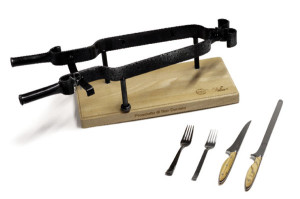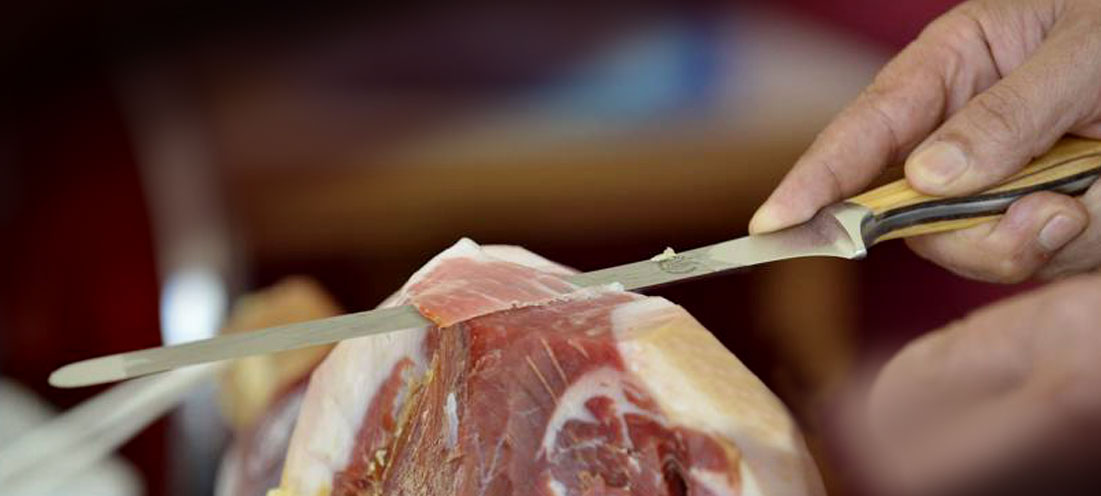A cutting board; a carving stand; a carving fork; a sturdy, short-bladed knife for removing the rind; and a sharp, long-bladed slicing knife. This is the essential equipment for hand-slicing a prosciutto di San Daniele while preserving its fragrance and aroma.
 In the case of a whole bone-in prosciutto, the rind, surface coating (stucco) and haunch bone must first be removed, using the short-bladed knife. To better preserve the remaining product, it is essential that only as much rind as is strictly necessary be removed. More rind will successively be removed every time slicing is resumed. After removing the rind, the prosciutto must be secured to the carving stand, with the part from which the rind has been removed facing upwards. At this point, slicing begins, always using both hands so as to keep the prosciutto steady while working, with the thin-bladed slicing knife in one hand and the fork in the other.
In the case of a whole bone-in prosciutto, the rind, surface coating (stucco) and haunch bone must first be removed, using the short-bladed knife. To better preserve the remaining product, it is essential that only as much rind as is strictly necessary be removed. More rind will successively be removed every time slicing is resumed. After removing the rind, the prosciutto must be secured to the carving stand, with the part from which the rind has been removed facing upwards. At this point, slicing begins, always using both hands so as to keep the prosciutto steady while working, with the thin-bladed slicing knife in one hand and the fork in the other.
The slicing must proceed from right to left with a slight sawing movement engaging the full length of the blade, without applying too much pressure. The thickness of the slices may vary according to taste.
Slicing is continued until the haunch bone is reached, with the rind and “stucco” being removed progressively. Once the bone has been reached, the ham is turned over so that the leaner side is facing upwards, the rind and “stucco” are removed, and the prosciutto is newly secured to the stand so that slicing can be resumed on this side.
For a de-boned ham supplied in slabs, a cutting board and a properly sharpened knife are sufficient.
After removing the slab of prosciutto from its vacuum packaging, the surface must first be dried with paper towelling or a dishcloth to eliminate the thin greasy film from the surface, after which the rind is removed. The slab of prosciutto is then positioned on the cutting board, with the fat-covered side facing uppermost as described above, and hand-slicing may begin.


Recent Comments